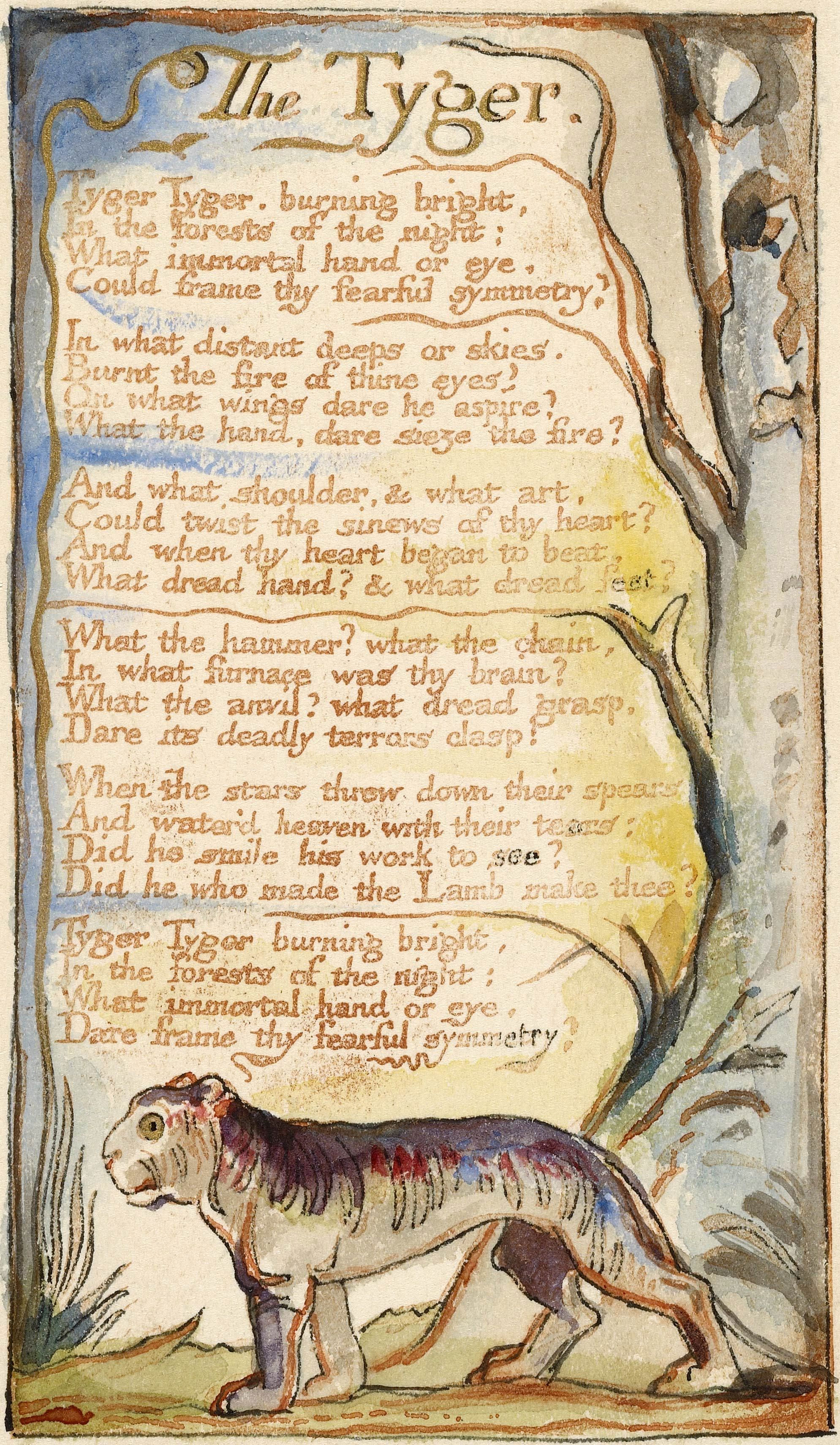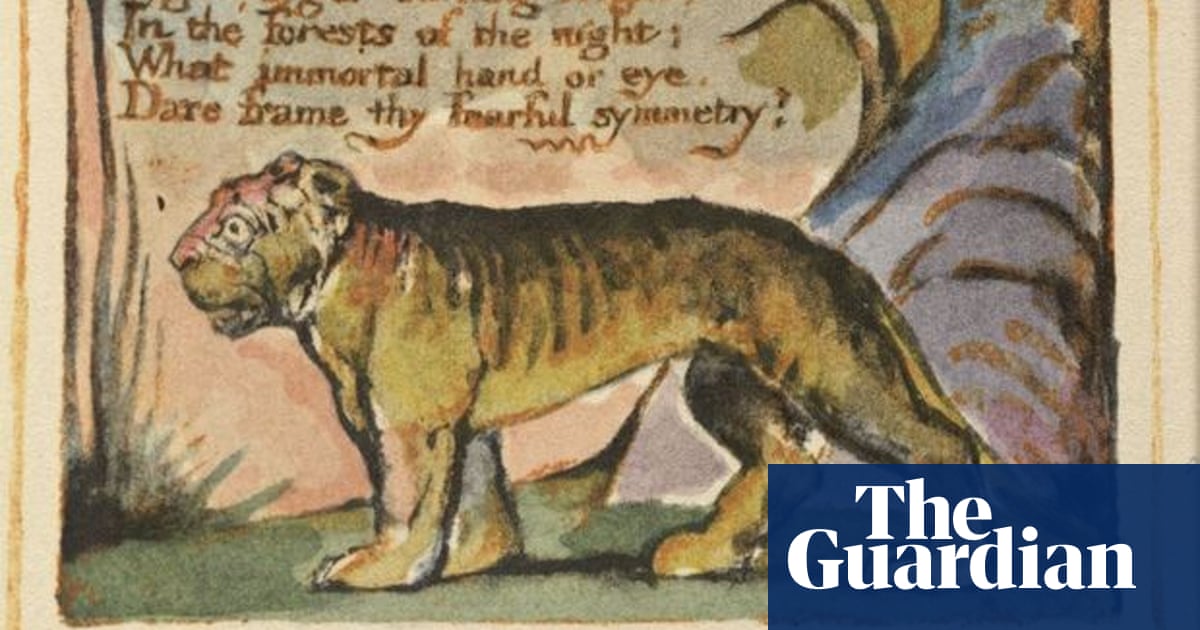The Phrase Fearful Symmetry in the the Tyger Describes
Java version 180_66 JavaTM SE Runtime Environment build 180_66-b17 Java HotSpotTM 64. Rhythmic phrase or title is easy to remember especially if set to music.

Fearful Symmetry William Blake S The Tyger Daddyelk Productions
Introduction The Tyger is a poem by William Blake that was first published in 1794 as part of the Songs of Experience collection.

. In William Blakes The Tyger the audience is presented with a striking almost fearful image of a tiger in a dark forest. Burning bright and frame thy fearful symmetry William Blake Tyger. Blake designs the poem to represent the darkness that God created.
Alfred Kazin a literary critic describes it as the most famous of his poems and The Cambridge Companion to William Blake describes it as the most anthologized poem in English. The narrator describes the difference between alliteration and assonance in the video and gives examples of each. Largely unrecognised during his life Blake is now considered a seminal figure in the history of the poetry and visual art of the Romantic AgeWhat he called his prophetic works were said by 20th-century critic Northrop Frye to form what is in proportion to its merits the least.
William Blake 28 November 1757 12 August 1827 was an English poet painter and printmaker. At the beginning of the poem the speaker questions What immortal hand or eye Could frame thy fearful symmetry 3-4 in order to portray the ferocity of the divine creature. FULL PRODUCT VERSION.
The Tyger by William Blake.

The Tiger Rising Novel Study Unit Novel Studies Novel Study Units Reading Response Activities
How William Blake Keeps Our Eye On The Tyger Art And Design The Guardian

How William Blake Keeps Our Eye On The Tyger Art And Design The Guardian
No comments for "The Phrase Fearful Symmetry in the the Tyger Describes"
Post a Comment